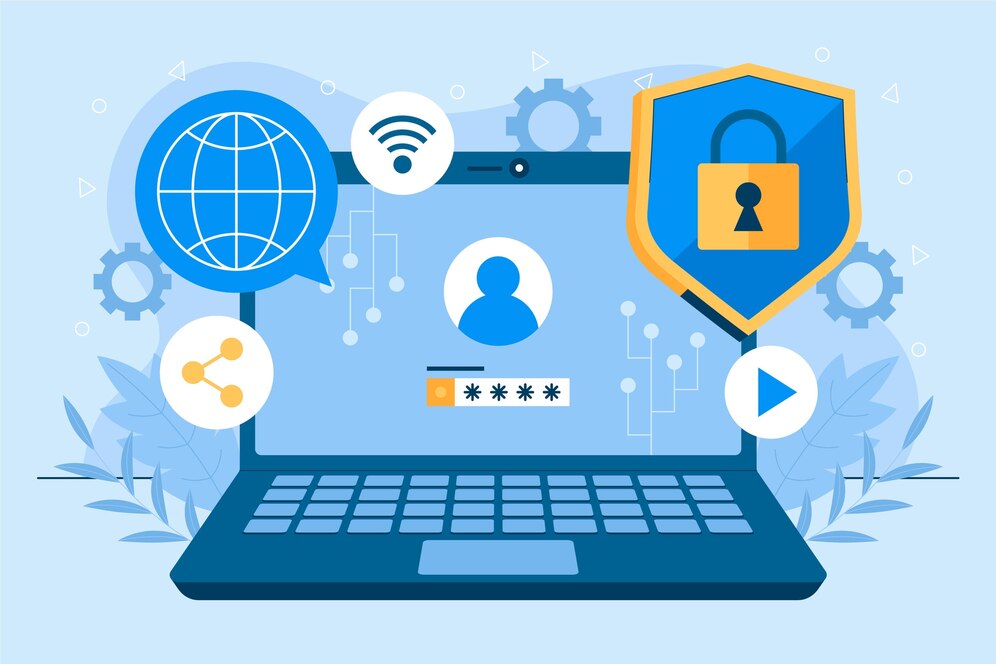The digital landscape is evolving at breakneck speed, and with it comes an urgent need to understand how our personal information is collected, used, and protected. Data privacy has become more than just a buzzword—it’s a fundamental right that affects every aspect of our online lives.
From social media platforms to e-commerce sites, every click, swipe, and search generates valuable data. But who controls this information? What regulations protect us? And what changes are reshaping the privacy landscape in 2025?
This comprehensive guide explores the latest developments in data protection laws, emerging privacy technologies, and practical steps you can take to safeguard your digital footprint. Whether you’re a business owner navigating compliance requirements or an individual concerned about online privacy, understanding these regulations is crucial for thriving in our data-driven world.
What Are the Latest Data Privacy Regulations in 2025?
The regulatory landscape for data protection continues to evolve rapidly as governments worldwide recognize the need for stronger privacy safeguards. New legislation builds upon existing frameworks while addressing emerging technologies and threats.
Recent developments show a clear trend toward stricter enforcement and expanded territorial reach. Countries that previously lacked comprehensive privacy laws are now implementing robust frameworks, creating a more unified global approach to data protection.
How Has GDPR Evolution Changed the Privacy Landscape?
The General Data Protection Regulation (GDPR) remains the gold standard for privacy legislation, but it’s far from static. Recent amendments have strengthened requirements for AI transparency and automated decision-making processes.
Organizations now face enhanced obligations regarding data minimization and purpose limitation. The concept of “privacy by design” has evolved from a best practice to a legal requirement, fundamentally changing how companies approach product development.
Enforcement actions have intensified significantly, with regulators imposing record-breaking fines. These penalties send a clear message that compliance isn’t optional—it’s essential for business survival.
What New Privacy Laws Are Emerging Globally?

The privacy revolution extends far beyond Europe. The United States has seen a surge in state-level legislation, with over 15 states now having comprehensive privacy laws modeled after California’s pioneering efforts.
Asia-Pacific countries are implementing their own frameworks, often combining elements from GDPR with region-specific requirements. India’s Digital Personal Data Protection Act and Japan’s enhanced APPI represent significant milestones in Asian privacy regulation.
Latin America and Africa are also joining the movement, with Brazil’s LGPD and South Africa’s POPIA setting new standards for their respective regions. These laws create both challenges and opportunities for global businesses.
How Do Digital Rights Impact Your Online Experience?
Digital rights encompass far more than just data protection—they define how we interact with technology and maintain autonomy in digital spaces. Understanding these rights empowers users to make informed decisions about their online activities.
The concept of digital sovereignty is gaining traction, with individuals demanding greater control over their digital identities. This shift challenges traditional business models that rely on extensive data collection.
What Are Your Fundamental Digital Rights?
Every internet user possesses certain inalienable rights in the digital realm. The right to access your personal data allows you to understand what information companies hold about you.
The right to rectification ensures you can correct inaccurate information, while the right to erasure (often called the “right to be forgotten”) lets you request data deletion under specific circumstances.
Portability rights enable you to transfer your data between services, promoting competition and preventing vendor lock-in. These rights collectively form the foundation of digital autonomy.
How Can You Exercise Your Privacy Rights Effectively?
Exercising privacy rights requires understanding both the mechanisms available and the limitations that exist. Most organizations now provide dedicated privacy portals or contact points for rights requests.
Documentation is crucial when making requests. Keep records of all communications, including dates, reference numbers, and responses received. This creates an audit trail that proves invaluable if disputes arise.
Time limits apply to most rights requests, with organizations typically having 30 days to respond. Understanding these deadlines helps you follow up appropriately and escalate when necessary.
Which Industries Face the Biggest Privacy Challenges?
Different sectors face unique privacy challenges based on the types of data they handle and their operational requirements. Healthcare, finance, and technology companies navigate particularly complex regulatory environments.
The convergence of multiple regulations creates compliance challenges that require sophisticated approaches. Organizations must balance legal requirements with operational efficiency and customer experience.
How Is Healthcare Data Protection Evolving?
Healthcare organizations manage some of the most sensitive personal information, making them prime targets for cyberattacks. Recent regulations have expanded the definition of health data to include fitness trackers and wellness apps.
Interoperability requirements now mandate secure data sharing between providers, creating new privacy risks. Organizations must implement robust safeguards while ensuring seamless patient care.
Telehealth’s explosive growth has introduced additional complexities. Cross-border consultations raise questions about which privacy laws apply and how to maintain compliance across jurisdictions.
What Privacy Concerns Exist in Financial Services?
Financial institutions have long been subject to strict privacy requirements, but emerging technologies create new challenges. Open banking initiatives require secure data sharing with third-party providers.
Cryptocurrency and blockchain technologies blur traditional regulatory boundaries. Regulators struggle to apply existing frameworks to decentralized systems that operate outside conventional financial structures.
Anti-money laundering requirements often conflict with privacy principles, forcing institutions to balance competing legal obligations. This tension requires careful navigation and often innovative solutions.
How Are Emerging Technologies Reshaping Privacy?

Technological advancement creates both opportunities and threats for privacy protection. Artificial intelligence, IoT devices, and quantum computing each present unique challenges that existing regulations struggle to address.
Privacy-enhancing technologies (PETs) offer promising solutions, enabling data analysis while maintaining individual privacy. These tools represent a paradigm shift in how we approach data protection.
What Role Does AI Play in Privacy Protection?
Artificial intelligence serves dual roles in the privacy ecosystem. While AI systems often require vast amounts of personal data for training, they also enable sophisticated privacy protection mechanisms.
Federated learning allows AI models to train on distributed data without centralizing sensitive information. This approach maintains privacy while enabling powerful machine learning applications.
Privacy-preserving AI techniques like differential privacy add mathematical noise to datasets, protecting individual privacy while maintaining statistical utility. These methods are becoming standard practice in responsible AI development.
How Do IoT Devices Impact Personal Privacy?
The Internet of Things has transformed our homes and workplaces into data-generating environments. Smart devices collect unprecedented amounts of behavioral data, often without users’ full awareness.
Privacy labels and transparency requirements help consumers make informed choices about IoT devices. However, the sheer volume of connected devices makes comprehensive privacy management challenging.
Edge computing offers a potential solution by processing data locally rather than sending it to cloud servers. This approach reduces privacy risks while maintaining the functionality users expect from smart devices.
What Are the Best Practices for Data Protection Compliance?
Compliance requires more than just checking boxes—it demands a comprehensive approach that integrates privacy into every aspect of operations. Successful organizations view privacy as a competitive advantage rather than a burden.
Building a privacy-first culture starts with leadership commitment and extends throughout the organization. Every employee plays a role in protecting personal data.
How Can Organizations Build Privacy-First Cultures?
Creating a privacy-conscious organization begins with clear policies and regular training. Employees need to understand not just what to do, but why privacy matters.
Privacy champions throughout the organization help embed best practices into daily operations. These advocates serve as resources for colleagues and help identify potential privacy risks early.
Regular privacy assessments and audits ensure continuous improvement. Organizations should treat privacy as an ongoing journey rather than a destination.
What Technical Measures Enhance Data Protection?
Technical safeguards form the backbone of effective data protection. Encryption, both in transit and at rest, provides fundamental protection against unauthorized access.
Access controls based on the principle of least privilege minimize exposure risks. Regular reviews ensure permissions remain appropriate as roles and responsibilities change.
Data loss prevention (DLP) tools help identify and prevent unauthorized data transfers. These systems use pattern matching and machine learning to detect potential breaches before they occur.
How Can Individuals Protect Their Personal Data?
Individual privacy protection requires active engagement and ongoing vigilance. While regulations provide important protections, personal responsibility remains crucial for maintaining privacy.
Simple habits can significantly enhance privacy protection. Understanding privacy settings, using strong authentication, and being selective about data sharing form the foundation of personal privacy hygiene.
What Privacy Tools Should Everyone Use?
Virtual private networks (VPNs) encrypt internet traffic and mask IP addresses, providing essential protection on public networks. Choose reputable providers with clear no-logs policies.
Password managers eliminate the security risks of password reuse while making strong, unique passwords practical. Two-factor authentication adds an extra security layer for sensitive accounts.
Privacy-focused browsers and search engines minimize data collection while providing functionality comparable to mainstream alternatives. These tools prove that privacy and usability aren’t mutually exclusive.
How Can You Minimize Your Digital Footprint?
Reducing your digital footprint starts with auditing existing online accounts. Delete unused accounts and minimize information shared on active ones.
Social media privacy settings require regular review as platforms frequently change their policies. Assume that anything posted online may become public, regardless of current privacy settings.
Data brokers collect and sell personal information from various sources. Opting out of these services requires effort but significantly reduces your digital exposure.
What Does the Future Hold for Data Privacy?
The privacy landscape will continue evolving as technology advances and societal expectations shift. Quantum computing, biometric authentication, and neural interfaces present both opportunities and challenges.
International cooperation on privacy standards is increasing, potentially leading to more harmonized global frameworks. This convergence could simplify compliance while strengthening individual protections.
How Will Privacy Regulations Evolve?
Future regulations will likely address emerging technologies more explicitly. AI governance frameworks are already taking shape, with privacy considerations at their core.
Cross-border data transfer mechanisms will require refinement as data localization requirements proliferate. Balancing national sovereignty with global connectivity remains a key challenge.
Children’s privacy will receive increased attention, with stricter age verification requirements and enhanced protections for minors’ data. These measures reflect growing concern about technology’s impact on young people.
What Technologies Will Define Future Privacy?
Homomorphic encryption enables computation on encrypted data without decryption, revolutionizing how sensitive information can be processed securely.
Blockchain-based identity systems could give individuals unprecedented control over their personal information. Self-sovereign identity represents a fundamental shift in how we manage digital identities.
Quantum-resistant cryptography prepares for a future where current encryption methods may be vulnerable. Organizations must begin planning for this transition now to ensure long-term data protection.
FAQs
What is the difference between data privacy and data security?
Data privacy focuses on the proper handling, processing, and usage of personal information according to legal requirements and individual preferences. It addresses questions like who can access data, for what purposes, and how long it’s retained. Data security, on the other hand, involves the technical and organizational measures used to protect data from unauthorized access, breaches, or loss. While security is a component of privacy, privacy encompasses broader concerns about data governance and individual rights.
How often do privacy regulations change?
Privacy regulations undergo significant updates approximately every 2-3 years, with minor amendments and clarifications occurring more frequently. Enforcement guidance and interpretations evolve continuously as regulators address new technologies and use cases. Organizations should review their privacy programs at least annually and monitor regulatory developments through official channels and industry associations to stay current with changes.
Can companies share my data without consent?
Companies can share personal data without explicit consent only in specific circumstances defined by applicable laws. These typically include legal obligations, vital interests protection, legitimate business interests, or anonymized data that cannot identify individuals. However, most privacy regulations require transparency about data sharing practices and provide individuals with rights to object to certain types of sharing.
What should I do if my data is breached?
If your data is breached, immediately change passwords for affected accounts and enable two-factor authentication where available. Monitor financial statements and credit reports for suspicious activity. Exercise your rights under applicable privacy laws to understand what data was compromised and what protective measures the organization is taking. Consider identity monitoring services and document all communications related to the breach for potential future claims.
How can small businesses achieve privacy compliance?
Small businesses can achieve privacy compliance by starting with a data inventory to understand what personal information they collect and process. Implement basic technical measures like encryption and access controls. Create clear privacy policies and procedures scaled to your operations. Consider privacy-by-design principles when developing new products or services. Many regulators provide resources specifically designed for small businesses, and industry associations often offer templates and guidance tailored to smaller organizations.
